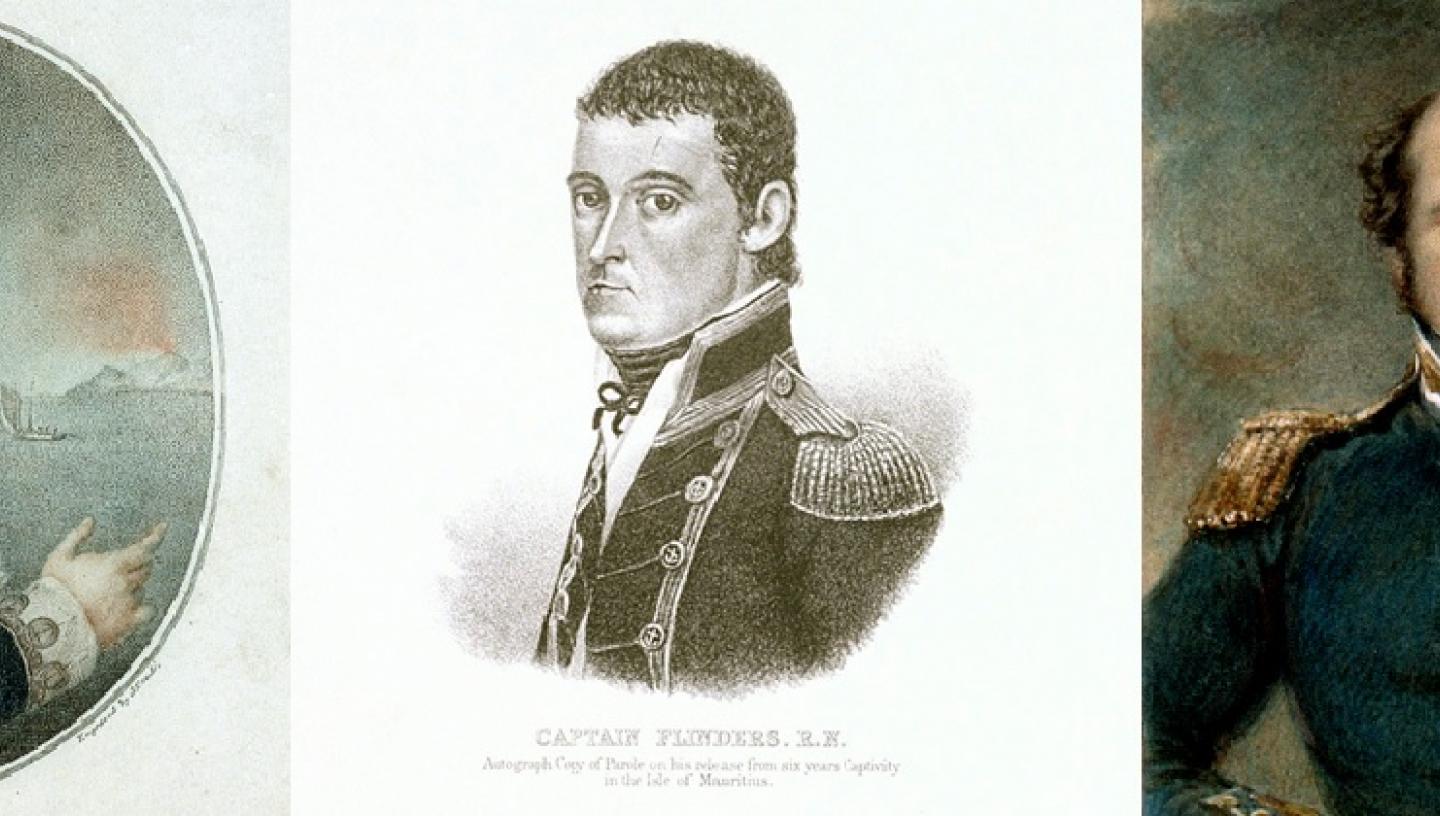
27 Mar 2017
William Bligh (1754-1817), Matthew Flinders (1774-1814) and Sir John Franklin (1786-1847) each had storied careers. Mike Bevan investigates the way these three careers overlapped and intertwined.
William Bligh, of Mutiny of the Bounty fame accompanied Captain James Cook on the Resolution in 1776 (3rd voyage of discovery). As captain of the Providence (1791-1793) transporting breadfruit from Tahiti to Jamaica, Matthew Flinders also served as navigator and chartmaker.
Bligh served as captain of the Glatton under Vice-Admiral Horatio Nelson, at the Battle of Copenhagen, 2 April 1801, receiving praise from Nelson for his conduct. The Glatton sailed safely between the banks whereas three other ships ran aground. Bligh obeyed Nelson’s decision to ignore Parker’s signal to stop battle and this ensured that ships behind him continued fighting.
For details of Bligh’s involvement at the Battle of Camperdown, 11 October 1797, as captain of the Director, and also the Mutiny of the Nore, 12 May to 13 June 1797, see lieutenant’s log ADM/L/D/128.
Bligh was appointed governor of New South Wales [13 August 1806 – 26 January 1808] by Sir Joseph Banks (Banks was also responsible for authorising Bligh’s voyage in the Bounty which later turned mutinous). Interestingly, Flinders was a midshipman on Reliance in 1795 which transported the newly appointed governor of New South Wales, Captain John Hunter; and later another governor, Lachlan Macquarie, who became aware of Flinders’ preference for the name Australia and decided to use the name in his dispatches to England. In 1824, the British Admiralty officially agreed to the name.
Matthew Flinders was given command of the Investigator in 1801 when Flinders borrowed from Alexander Dalrymple’s 1771 rare-book, ‘An historical collection of the voyages and discoveries in the South Pacific Ocean’. In 1804 Flinders writes to Sir Joseph Banks on “my general chart of Australia”. His ‘voyage to Terra Australis’ led to the coining of the continent of Australia. Sir John Franklin was appointed midshipman on the Investigator under the command of Flinders, who was also his uncle!
Incidentally both served in the Bellerophon during famous battles. Flinders at the Battle of the Glorious First of June, June 1794 and Franklin at the Battle of Trafalgar, 21 October 1805.
Franklin entered the Navy as a first class volunteer in 1800 and played a role in the Battle of Copenhagen of 1801 in the Polyphemus. Remember that William Bligh captained the Glatton in the same battle. Franklin was actually in correspondence with Sir Joseph Banks and Flinders.
For original letters including these characters see FLI/1
Franklin's Last Message
Find out more about Franklin's Last Message
Visit the Caird Library and Archive
Mike Bevan, Archivist